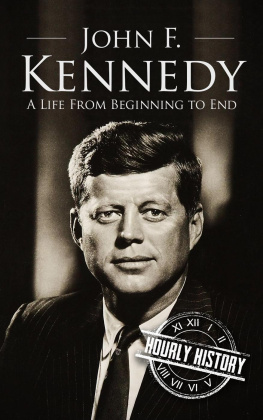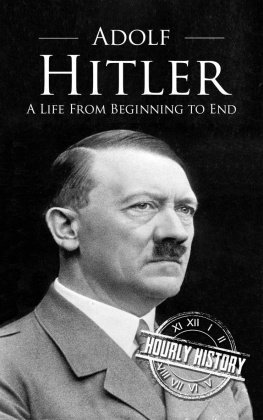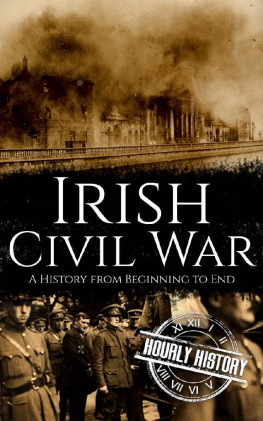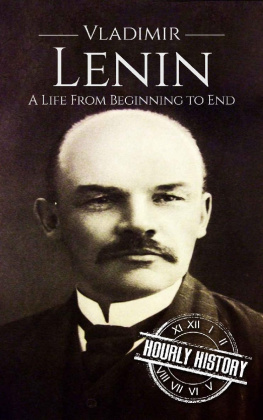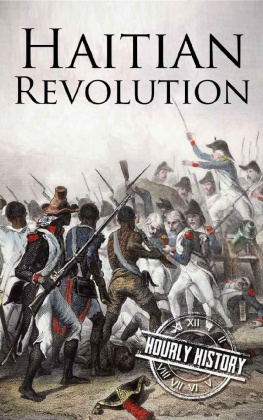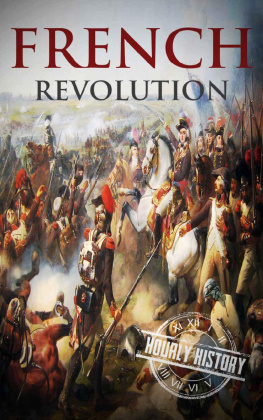Hourly History - Spanish Civil War: A History From Beginning to End
Here you can read online Hourly History - Spanish Civil War: A History From Beginning to End full text of the book (entire story) in english for free. Download pdf and epub, get meaning, cover and reviews about this ebook. year: 2018, publisher: Hourly History, genre: Politics. Description of the work, (preface) as well as reviews are available. Best literature library LitArk.com created for fans of good reading and offers a wide selection of genres:
Romance novel
Science fiction
Adventure
Detective
Science
History
Home and family
Prose
Art
Politics
Computer
Non-fiction
Religion
Business
Children
Humor
Choose a favorite category and find really read worthwhile books. Enjoy immersion in the world of imagination, feel the emotions of the characters or learn something new for yourself, make an fascinating discovery.

- Book:Spanish Civil War: A History From Beginning to End
- Author:
- Publisher:Hourly History
- Genre:
- Year:2018
- Rating:4 / 5
- Favourites:Add to favourites
- Your mark:
- 80
- 1
- 2
- 3
- 4
- 5
Spanish Civil War: A History From Beginning to End: summary, description and annotation
We offer to read an annotation, description, summary or preface (depends on what the author of the book "Spanish Civil War: A History From Beginning to End" wrote himself). If you haven't found the necessary information about the book — write in the comments, we will try to find it.
Spanish Civil War: A History From Beginning to End — read online for free the complete book (whole text) full work
Below is the text of the book, divided by pages. System saving the place of the last page read, allows you to conveniently read the book "Spanish Civil War: A History From Beginning to End" online for free, without having to search again every time where you left off. Put a bookmark, and you can go to the page where you finished reading at any time.
Font size:
Interval:
Bookmark:
Copyright 2018 by Hourly History.
All rights reserved.
For most Spanish people, their civil war was the defining event of the twentieth century. Spain took no direct part in the First or Second World Wars or in any of the South-East Asian wars which followed. For most Spanish, their civil war is known simply as the War.
Still, the Spanish Civil War is one of the least known and documented wars, in part because Spain seems determined to repress its memory. Although the war left an indelible scar on the Spanish psyche, an agreement to ignore itwas signed into law in 1977, known as the Pact of Forgetting ( el pacto del olvido). The history of the civil war is generally not taught in Spanish schools, there are almost no public memorials to those killed, and recent attempts by forensic pathologists to uncover the graves of those murdered during the conflict have been met with apathy and on occasion outright opposition.
This is not a simple war to understand. The causes seem complex to outsiders, the fighting often involved a number of small factions working virtually independently, and outside intervention wasnt just important, it defined much of the course of the war. However, the Spanish Civil War is important not only for itself but because, in retrospect, it prefigured much of what was to follow in World War II. The first time that German and Russian tanks, aircraft, and soldiers fought each other wasnt when Germany invaded Russia in 1941, it was on and over the battlefields of Spain. Improvements in military technology and the strategy and tactics of modern war were refined during the civil war. The German Blitzkrieg which would devastate Europe a few years later was first rehearsed during this war.
The Spanish Civil War is often seen as a laboratory where powerful nations began to perfect the hardware and tactics that they would later use in a global war. But it was much more than this; the civil war was a baffling, internecine conflict fought between people who often werent entirely clear about what or who they were fighting for or against.
In the sixteenth and seventeenth centuries, Spain was the most powerful nation on earth and supported by one of the largest empires ever seen. Treasures from South America flowed into Spain at an unprecedented rate and provided staggering wealth for a small number of people. By the early 1800s, this wealth and the military power it had purchased was almost gone. At the Battle of Trafalgar in 1805, the Spanish fleet was destroyed, leaving Spain with no means of protecting the remnants of its empire. In 1808, French forces under the command of Napoleon invaded Spain and Portugal, bringing destruction and death to the Iberian Peninsula.
One hundred years later, Spain was a poor and mainly agrarian country ruled by a constitutional monarchy under King Alfonso XIII. Corruption was endemic at all levels of government and made even worse by inefficiency and incompetence amongst officials who had often purchased their positions. The Catholic Church occupied a vital and influential role in Spanish society. In 1921, there was a rebellion in one of the few overseas possessions still controlled by Spain: Spanish Morocco. An army was sent to quash the rebellion. Instead, it was massacred by local tribesmen leading to wide-scale protests and demonstrations. In 1923, King Alfonso agreed that General Primo de Rivera should take charge of the country in order to quell unrest and re-establish the rule of law.
Although he ruled as a military dictator, Rivera proved adept at managing the Spanish economy, and under his control unemployment fell and industrial output increased hugely. In 1925, Rivera was even able to bring Morocco back under Spanish control. However, the worldwide recession of the late 1920s hit Spain hard. Rivera was not able to solve the subsequent financial problems, and he resigned in late 1930, prompting a general election.
The elections in April 1931 brought to power the Republicans, a coalition of left-wing parties who wanted to create a new Spanish Republic (Spain had briefly been a republic in 1873, for less than one year). The ruling group, which became known as the Popular Front, included both socialists and communists and quickly abolished the monarchy and announced the start of the Second Spanish Republic.
The members of the coalition which made up the Popular Front were also opposed to the Catholic Church, which they saw as having too great an influence on Spanish society. This aspect of their policies was particularly abhorrent to people in the middle and upper classes who saw the Church as an important element of stability and conservatism in Spain.
The Popular Front was far from a unified group. It included the right-wing of the Spanish Socialist Party but was opposed by the left wing of the same party which wanted revolution rather than gradual change. It also included the powerful Spanish Communist Party, but in parliament it was opposed by the influential anarchist group the Confederacin Nacional del Trabajo (CNT) who were committed to the overthrow of capitalism and to socialist revolution as well as to Basque and Catalan separation. Chaos and confrontation followed the elections, and in 1933, the collapse of the Popular Front government prompted new elections in which the extreme right swept to power.
The new ruling group comprised industrialists, monarchists, and admirers of the fascist successes of Adolf Hitler in Germany and Benito Mussolini in Italy. Over the next three years, the country was almost crippled by a series of strikes and violent confrontations as supporters of the Popular Front opposed the new ruling group. In early 1936, new elections were called. The extreme left once more swept to power, but the new Popular Front government was so divided by internal squabbles that it failed to establish control over the country. Spain descended once more into chaos and anarchy.
In May 1936, the relatively conservative President Niceto Zamora was replaced by the radical Manuel Azaa, and Spain lurched even further to the left. As a direct reaction to this development, a group of senior army officers which included General Jos Sanjurjo and General Emilio Mola began to discuss the possibility of a coup to overthrow the Popular Front government. They also spoke with the governor of the Canary Islands, General Francisco Franco, a military commander whose ruthlessness had enraged the Popular Front when he had sent troops against strikers in Catalonia. Many supporters of the right began to wonder whether a military dictatorship might be the solution to Spains continuing political problems and whether Generals Franco, Mola, and Sanjurjo might be the people best placed to lead it.
Events were precipitated on July 12, 1936 in Madrid when members of a right-wing fascist Falange group murdered Jos Castillo, an officer in the elite Republican paramilitary group called the Assault Guard. Members of the Assault Guard responded with violence which included the murder of Jos Calvo Sotelo, a politician of the extreme right, on July 13. On July 19, General Mola issued a proclamation in the northern city of Navarre calling for a revolt against the Popular Front government. General Franco made a radio appeal asking all army officers to join the revolt. By the end of July 1936, rebel Nationalist forces under the command of the generals were in combat with Republican forces directed by the Popular Front. The Spanish Civil War had begun.
Font size:
Interval:
Bookmark:
Similar books «Spanish Civil War: A History From Beginning to End»
Look at similar books to Spanish Civil War: A History From Beginning to End. We have selected literature similar in name and meaning in the hope of providing readers with more options to find new, interesting, not yet read works.
Discussion, reviews of the book Spanish Civil War: A History From Beginning to End and just readers' own opinions. Leave your comments, write what you think about the work, its meaning or the main characters. Specify what exactly you liked and what you didn't like, and why you think so.

